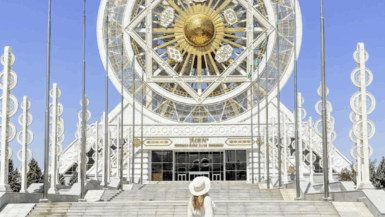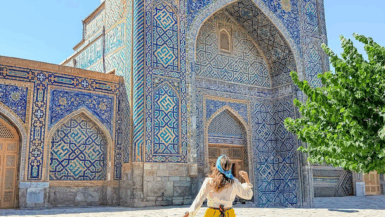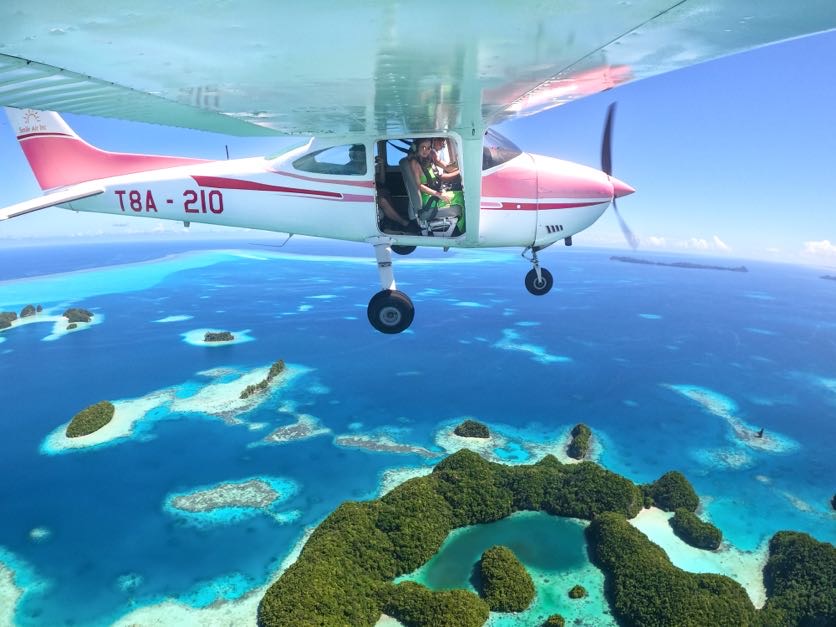
Palau is a tiny island country that’s east of the Philippines, and north of Papua New Guinea and Australia. From what I’ve gathered, it is best known either by divers as one of the top dive destinations, or by people who have seen the show Survivor. Some others know of it thanks to social media, and a smaller amount because of it’s bloody WWII history.
Whichever reason leads you to this post about Palau, I hope I can help you out with planning your trip there, because there aren’t many straight-forward posts about it. This is why I ended up figuring everything out once I arrived, and what a mission that was!
I recently went in April 2023, and a lot of things are still operating at post-covid-recovery speed. Many tour companies have closed down, and the remaining ones for one reason or another are terrible at communicating.
So the tours listed in this post are the ones I used, and I used them because they were the only ones that responded promptly…
Let’s begin!
Jump To:
Where is Palau?
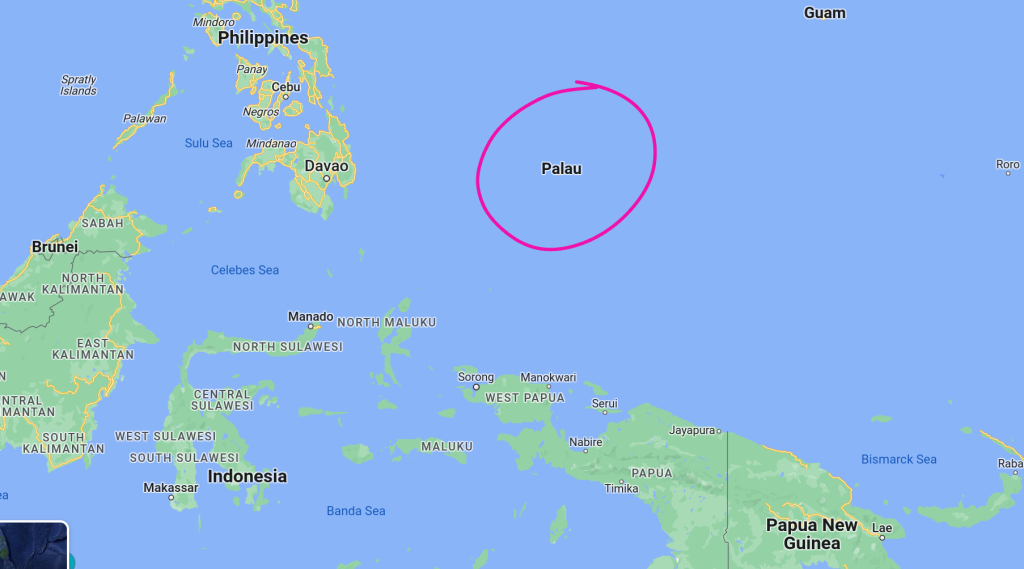
As mentioned, Palau is a tiny island country that’s east of the Philippines, and north of Papua New Guinea and Australia. You’d need to zoom in on the map to find it, or type the name into the search bar. Otherwise it’s not visible.
How to Get to Palau?
Due to its small size and remote location, getting to Palau is typically quite expensive. I was already “in the area”, in Papua New Guinea, so the flight was too terrible for me. There are now direct flights from PNG, but I didn’t have that option, and needed to fly through Manila.
Manila is the closest international airport to Palau, so it’s probably your best option to aim for if you want to flight hack. If you don’t want the extra work, just search flights straight to Palau and you’ll see your layover options.
I flew there and back with United. So they also probably have the best option for flights to/from USA. I’d recommend using Skyscanner to search for options!
For finding the cheapest flights, I always recommend using Skyscanner. If you’re a bit flexible with time, check out my post on how to play Flight Roulette to get the cheapest pricing!
The airport you’ll fly into is Koror (KOR).
How to Get Around in Palau?
Everything I read said Palau was so small that you can walk everywhere. I completely disagree with this. Most people stay on the “main strip”, which has a couple of restaurants and bars currently open, but it’s about a 30-40 minute to walk anywhere else.
Luckily most hotels and tours include transportation! Both hotels I stayed at included the airport transport, and all of the tours included it as well.
To get anywhere else, you’ll need a taxi.
Spoiler alert: flagging down taxis isn’t a thing, because most of them are unmarked.
To get a taxi, I usually asked the hotel or restaurant to call one for me. But then I ended up just getting the phone number of two of them to do it myself, and to share here. You’ll need to call from a landline as they likely don’t have phones that are whatsapp compatable.
Trusted Palau Taxis:
Leo: +680 7795280
Eric: +690 7753444
What Are the Main Areas of Palau
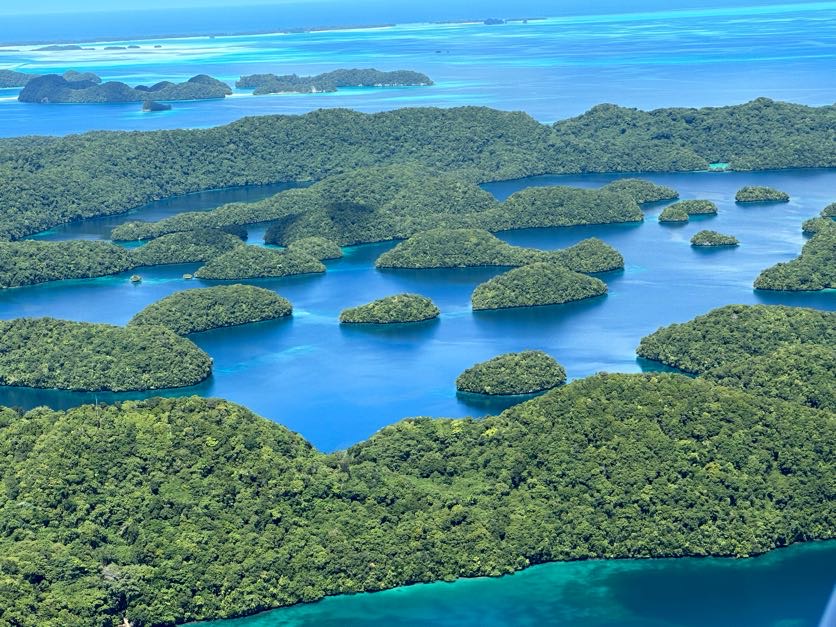
As I’ve said, Palau is tiny, so there’s really only a few areas and places you need to know:
- Koror: Where the airport is near, and where most people stay. This is where the “main street” is, with some restaurants, shops, and bars. My favorite place to go here was Canoe House.
- Malakal Island: right next to Koror, where there are also some hotels, the second best resort, and some waterfront restaurants/bars.
- Meyungs: the island where Palau Pacific Resort (PPR is)
- Rock Islands: these are the small islands you see in most photos of Palau. There are thousands of them, many have their own names, but collectively they are called the Rock Islands. This is where most of the tours and diving is as well, and it also includes Peleilui Island and Jellyfish Lake, which I’ll get to later
Where to Stay in Palau
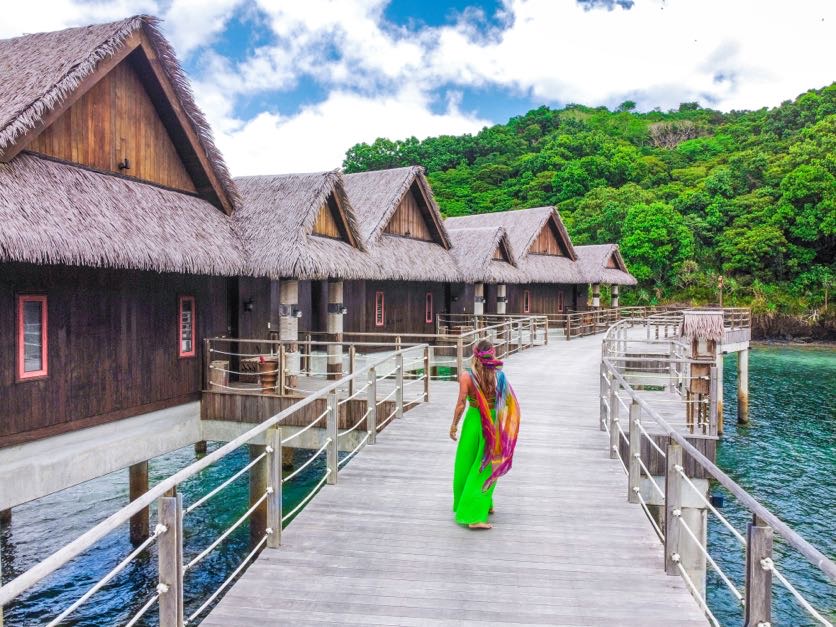
I’m not going to lie or hide this at all; I was able to get a social media collaboration wtih the best resort on the island. And I’m not saying it was the best because it was free either, I’m saying that because I also went to the other resorts to check them out and nothing else compared.
Palau Pacific Resort (known as PPR) and its sister property Pristine Villas, is where I stayed the first five days I was in Palau. Believe me when I say, it was absolute heaven, and the “workcation” I really needed after traveling aggressively through seven countries before this trip.
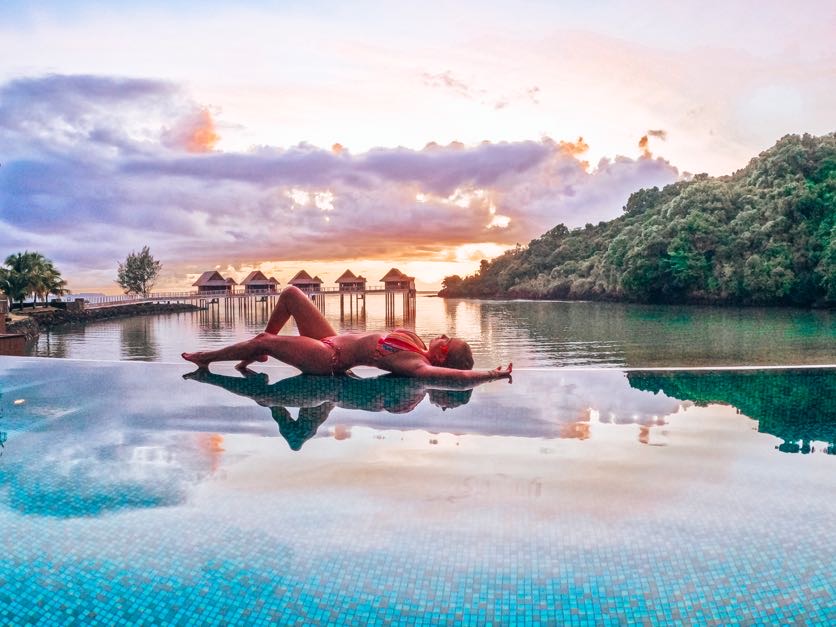
PPR has the only actual accessible beach on the island, and it’s a beautiful strech of white sand, blue waters, and best of all, the entire shore area is packed with coral reefs! Snorkel gear is included, so you can just walk into the water, and swim to see it!
They also have one of the three docks on the island, which means you can easily get picked up and dropped off for tours there. There’s a beautiful swimming pool that overlooks the beach, and a little pool bar palapa. The restaurant there was delicious, with my favorite dishes being the local Ukaeb, which is crab meat cooked in coconut cream, and the fresh tuna sashimi.
I basically had a solo honeymoon at Pristine Villas, where I got to stay in the *Lagoon View villa with its own private pool, which I absolutely LOVED! Like I could live there (if it wasn’t almost $2k per night). Then I also got to stay in one of the over-water villas which was also mesmerizing with its direct access down into the water!
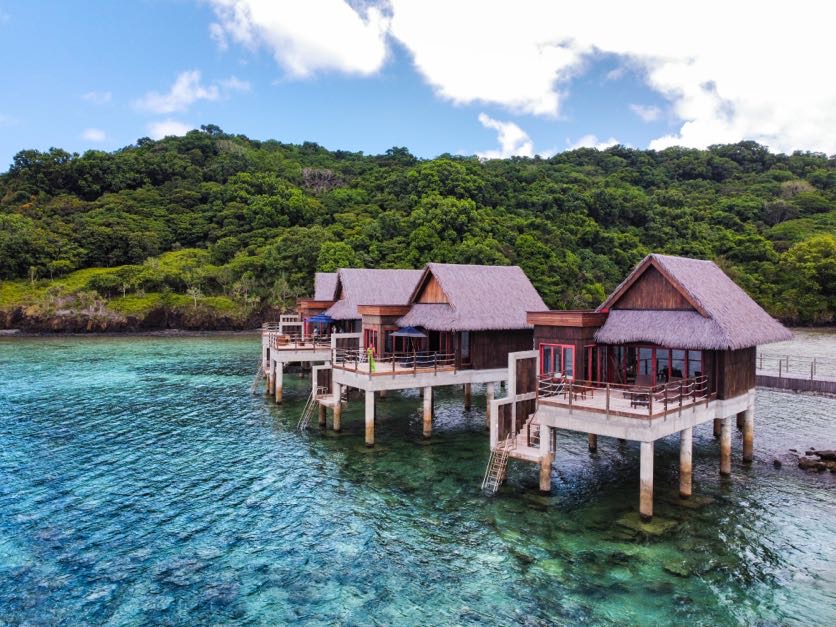
If you want to give yourself an incredible vacation, or perhaps are looking for an exotic, remote, adventurous place for a honeymoon, I would HIGHLY suggest Pristine Villas!
PPR has more budget-friendly options as well, with rooms on their hotel side starting at around $400/night.
If PPR and Pristine Villas isn’t in your budget frame, you can find other hotels for slightly less, but not much. The most affordable option I could find for a room that was up to my standards of comfortable was still $130/night. It was located on the main street though, which meant I had to get a taxi anyway to get to any beaches, and to be honest, I just went back to PPR to hang there anyway.
Speaking of which, non-hotel guests can still go to PPR to hang out at the beach and get something from the bar or restaurant! You might need to pay extra for towels and snorkel gear, but it’s well worth it! Definitely my favorite place to hang when I wasn’t doing tours!
Affordable Hotel Options:
The other place I stayed at for $130/night was Garden Palace Downtown Koror.
It is run by a lovely Japanese family, and they cook you included breakfast in the morning! Before covid it likely would have been in a decent area, since it’s a block from the main road and walking distance to shops and a few restaurants and bars. But as I’ve mentioned, many of them are closed.
There isn’t a beach near it either, so I had to walk 40+ minutes or take the taxi, which is usually $7-10 each way.
Before you book any flights or tours, I would highly recommend getting travel insurance! It covers cancellations and injuries! Check out affordable plans on World Nomads!
Best Tours to Take in Palau
Like I said initially, everyone goes to Palau for a different reason. I went there to discover all of those reasons, so I went on almost every type of tour. Below is an overview and the tour company info:
Scenic Flight Over the Rock Islands

Company: Smile Air
Cost: $200
Doing the scenic flight over the Rock Islands in Palau was probably one of my favorite things that I did there. This is because one of the main things I wanted to see was a view of the gum drop looking islands.
The first company I emailed to book was sold out, but they recommended a new company called Smile Air, and I’m so glad they did!

They not only have a pink plane, but they give you the door off option, and the pilot I had gave me the best photo and video ever from his GoPro he had mounted on the wing!
As you can see in the photos, the views are absolutely incredible, and to me worth it for the hefty price tag of $200.
Rock Islands Snorkel and Boat Tour

Company: Impac Tours
Price: $120 (Rock Islands Snorkeling Tour w/out kayak or jellyfish lake)
*Note: you also have to pay a Rock Islands permit fee, which is mandatory for this tour and valid for 5 days, price is $50.
I did the general Rock Islands snorkel and boat tour, because I was told the other option, which included Jelly Fish Lake, wasn’t worth it. And I was told this by all the locals and tour operators…not negative people on social media. I’ll get to that in a sec though. And BTW the island with Jellyfish Lake is IN the Rock Islands.
Anyway, I really loved this 6-7 hour boat tour! You get to cruise all around the many little islands, which stops first at a place they call Milky Way. In this little nook there is thick white mineral sedimate on the sea floor, which has a lot of beauty benefits for humans.
You can cover yourself in the mud, then jump in the water to easily wash it off. It didn’t have any bad affects on my skin or hair, but forewarning, it doesn’t smell delicious.
Then you will stop at a couple of other little islands to snorkel. The reefs out there are so incredible, and still somewhat colorful. There’s also tons of fish!
For lunch you’ll stop at Shark Alley island, and as the name implies, there’s a bunch of small Black Tip sharks. Don’t worry, they don’t bite. But the boat guides will likely throw rice in the water and make them come closer!
This tour offers the option to pay more to do a kayak excursion as well.
Jellyfish Lake
Company: Impac Tours
Price: $170
*Plus Jellyfish Lake Permit: $100
I was a bit bummed (Ok, a lot bummed) when I got to Palau and everyone told me there were no jellyfish in Jellyfish Lake. From what I gathered, the increase in water temps from global warming caused most of the jellyfish to either migrate elsewhere or die.
Everyone who had been recently said they saw maybe 1-3 of the golden jellyfish you see all over IG. How sad is that!
Some people said this has happened before, and the jellies returned when the water temps cooled a bit, but judging by how temps are just increasing, I’m not sure if or when this could be.
That being said, make sure you contact them first to ask if the jellies are back yet!
Peleilui Island
Peleilui Island is the infamous island where the bloody battles between USA and Japan took palce. For history buffs and anyone wanting to pay homage, do the land tour here as well as the dive stop.
On the land tour, you will see war paraphanalia left behind, like tanks, weapons, and bunkers. There are also memorials for the killed soldiers. The island itself is also very beautiful, with an abundance of nature both above and below water!
Scuba Diving in Palau

Company: Palau Dive Adventures
Contact: +680 4885387
Price: $200+ depending on how many tanks
Permit Price: $50 for Rock Islands (unless you already have it from another tour)
Did you know that Palau is one of the top diving destinations in the entire world? If you aren’t certified to dive yet and you want to go to Palau, get certified because you don’t want to miss it! If you’re a diver, well, I’m sure you already know all of this!
I’m not the most avid diver (it gives me anxiety) but I will always dive in destinations like Palau where I know it’s rare to see what’s under the water there.
I can confirm, that diving in Palau was in fact one of the best places that I’ve seen in the world so far (I’ve dove in about 30+ countries). This is because some of the coral actually still has color, whereas most I encounter is bleached due to the rising water temperatures.
Below are the dive sites I did and some others that were recommended to me:
#1 Blue Corner
PADI ranks Blue Corner in Palau as the #3 dive site in the world! As the name implies, it is a corner of one of the Rock Islands, and the drop off stretches down for endless meters, completely covered with coral and sea life.
The thing that makes the Blue Corner unique is that there’s a strong current that’s created around the corner. This current sends sealife like sharks and turtles underwater-surfing around it, which makes quite the sight to see if you’re diving there.
Most of the time you need to use a hook-method, which I’d never heard of before, and involves taking a small metal hook and placing it in a rock nook, then holding onto a rope attached to it. You then are basically flying underwater as the current goes past you, along with all of the sea life!
Unfortunately (or maybe not lol), there was absolutely no current when I went. We still saw a lot of turtles, but only a few small Black Tip sharks, which I was sad about, since I love seeing the big sharks.
#2 German Channel
This previous channel…dug by the Germans, as the name implies, creates an ideal feeding environment for manta rays! I didn’t see any, but I saw photos from people who did, and it looked magical.
My dive had poor visibility and I didn’t see much, so I can’t honestly say I enjoyed this one.
#3 Peleilui Island
I did not dive Peleilui, but a (very cute) guy I met did and said it was phenomenal. Again, I’d recommend also doing the land tour with the dive tour!
#4 Shallow Reef Dives
We did a shallow reef dive to practice or something before doing the Blue Corner, and it was also very beauitful. I believe it was called the Virgin Mary Hole, or the Coral Garden, but I assume there’s a lot of smaller sites like this that most tours include.
Hanging Out at the Beach

Again, there really aren’t any accessible beaches in Koror aside at the resorts and a few hotels. I saw one at Palau Royal Resort but it was nothing compared to PPR.
That being said, my top choice for a chill beach day is to take a taxi to Palau Pacific Resort for the day. Please mention I referred you so they know I’m doing my job 😉
Please don’t forget! I work extremely hard to produce these free travel guides and posts! If it helped you, or you enjoyed it, PLEASE give it a share on social media, and follow me to keep up with more posts! You’re two minutes of effort truly helps keep my business running! Thank ya!
xx, Alyssa




